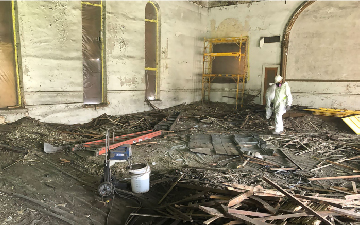The Chelsea Avenue Presbyterian Church in Memphis, Tennessee boasts rich historic significance. Completed in 1860, it was originally the Third Presbyterian Church but was known locally as “The Brick Church” until it was renamed the Chelsea Avenue Presbyterian Church in 1916. When union troops captured Memphis, they occupied the building and used the upper floor as a makeshift hospital and the lower floor was used for the troops’ horses. Today, a historic marker commemorating these events hangs outside the church, with at least eight other historic markers within walking distance further emphasizing the church’s regional significance.
The Chelsea Church was abandoned until the City of Memphis and Shelby County Community Redevelopment Agency took ownership of the property with plans to redevelop the site. The church was identified by area residents as an investment priority for the "greater Uptown" tax district that includes neighborhoods like Smokey City, New Chicago, and the Pinch.
Given the church’s age, it came as no surprise that asbestos and lead based paint were present in various building materials such as drywall and plaster that had fallen over time, contaminating the entire contents of the building with asbestos and lead. EnSafe and its wholly owned subsidiary GR2 LLC, were contracted to clean up all the asbestos and lead contaminated debris and abate any remaining asbestos within the building.
To perform this work, the EnSafe team prepared and submitted the necessary asbestos permit, which required a 10-working-day notification period prior to starting work. Our team completed Daily Safety Tailgate meetings and performed a Job Hazard Assessment using the Safe Work Assessment and Permit system for activities to be performed each day. In addition, EnSafe’s team completed a Daily Equipment Inspection Checklist for all mobile equipment on the project site. A staging area was provided for site vehicles and equipment to control traffic flow onsite and offsite, and our team built the necessary containment structures to abate the building. Air monitoring was provided during all abatement activities, including final clearances.
Our team removed all identified asbestos-containing material, floor tile and mastic, plaster, drywall, pipe insulation, and roofing material. As the entire contents of the church had been cross-contaminated by asbestos and lead, the entire contents were abated. During the project, our team removed 16 roll-offs of friable and non-friable asbestos and lead containing material from the three-story structure. In addition, EnSafe stabilized over 500 square feet of lead-based paint remaining within the structure.
With the successful abatement and removal of asbestos and lead-based paint, numerous options for the redevelopment of the Chelsea Avenue Church have been considered.
